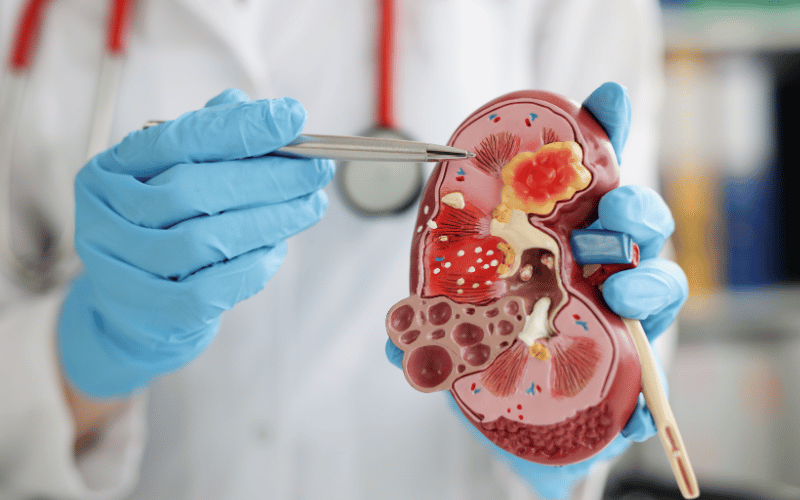Frequently Asked Questions about End Stage Renal Disease (ESRD) Symptoms

1. How can I recognize the early symptoms of ESRD?
Early symptoms of ESRD may include fatigue, weakness, nausea, vomiting, and changes in urine output. However, these symptoms can also be indicative of other health issues. It’s essential to consult with a healthcare professional if you’re experiencing any of these symptoms, as early diagnosis and intervention are crucial for managing ESRD effectively.
2. What is the difference between chronic kidney disease (CKD) and end stage renal disease (ESRD)?
Chronic kidney disease (CKD) is a progressive condition that involves a gradual decline in kidney function over time. End stage renal disease (ESRD) is the most severe stage of CKD, in which kidney function is less than 15% of normal. At this stage, the kidneys can no longer effectively filter waste and excess fluid from the blood, and dialysis or a kidney transplant is typically required.
3. Can lifestyle changes help manage ESRD symptoms?
Yes, lifestyle changes can play a significant role in managing ESRD symptoms. Maintaining a healthy diet, staying physically active, and monitoring fluid intake can help alleviate some symptoms, such as swelling, high blood pressure, and fatigue. It’s crucial to work closely with a healthcare professional to develop a personalized plan that addresses your unique needs.
4. How is end stage renal disease treated?
Treatment options for ESRD typically include dialysis or a kidney transplant. Dialysis is a process that helps remove waste products and excess fluid from the blood when the kidneys can no longer do so effectively. There are two main types of dialysis: hemodialysis and peritoneal dialysis. A kidney transplant involves replacing the damaged kidneys with a healthy donor kidney. The choice of treatment depends on various factors, including the patient’s overall health, personal preferences, and the availability of a suitable donor kidney.
5. Can ESRD symptoms be reversed?
While some symptoms may improve with appropriate treatment and lifestyle changes, ESRD itself is a progressive condition that cannot be reversed. The primary goal of ESRD treatment is to manage symptoms, maintain quality of life, and slow the progression of the disease. Early intervention and ongoing management are crucial for achieving the best possible outcomes for ESRD patients.
Conclusion
The top 10 symptoms of end stage renal disease (ESRD) discussed in this article serve as a valuable guide for recognizing and addressing this life-altering condition. Early detection and intervention are crucial in managing ESRD and minimizing its impact on daily life. By understanding these symptoms and working closely with healthcare providers, patients can develop effective care plans tailored to their unique needs, ultimately leading to improved health outcomes and quality of life.
As each individual’s experience with ESRD may differ, it’s essential to communicate any concerns or changes in symptoms to your healthcare provider. Together, you can develop a comprehensive treatment plan that addresses your specific needs and helps you maintain your well-being in the face of ESRD. Remember, recognizing the signs and taking appropriate action is key to managing this condition and living your best possible life.